Slovenia occupies a soft spot in my travel-writer heart. It was the first country I ever researched as a guidebook writer -- for Fodor’s in 2005 (I’ve posted a photo of the book here). Slovenia wasn’t technically the first guidebook I’d ever worked on – that was a Fodor’s guide to Czechoslovakia way back in 1991. But that project belonged more to my girlfriend at the time, Delia, than it did to me, and we only really did it for the fun of it. Neither of us had any intention at the time of becoming travel writers.
The 2005 Slovenia guide was something different. I’d been going through a rough patch, personally and professionally, that year, and after much soul-searching decided to leave my job as an editor for Radio Free Europe/Radio Liberty in Prague. It’d become a 9am-5pm grind, and I had the feeling life was passing me by. I’d also recently broken up with a girlfriend (a different one), and my head and heart were all over the map.
After resigning and breaking up (I’ll spare you the details), I decided on a whim to fly to Morocco to clear my mind. In hindsight, it was a good decision. It helped me to reset my mood and, looking back, put me on my future course (the course I’m still on today).
One evening during the trip to Morocco, after hiking around the Atlas Mountains (or something like that), I stopped by a village Internet café to check my email. Out of the blue had come a message from a guy named Douglas Stallings, an editor for Fodor’s in New York. Before leaving for Morocco, I had mass-emailed my resume to publishers around the world, but I wasn’t expecting to hear anything back. Here’s what Doug wrote:
Mark, You probably didn't expect to hear from me so soon, but, as they say, something has come up. One of the writers who is contracted to work on our new Croatia & Slovenia guide is going to have to drop out for some personal reasons, which leaves me short-handed … If you think you might have an interest in working on the (Slovenia) chapter, please let me know right away, and we should talk.
(I just checked the date of that email. It was June 23 – coincidentally, the same day of the year that I’m typing this post now).
I wrote Doug back immediately, closed up shop in Morocco, and returned to Prague as soon as I could. Within a few weeks, he’d offered me the Slovenia chapter and I was on a plane to Ljubljana. I haven’t stopped researching travel guides since.
This post was supposed to be about lakes, so let’s get back on track. As I noted in the intro, Slovenia has two world-class lakes. Everyone knows Bled, but Bohinj is a little more obscure. Before I go into how the two lakes are different, though, maybe it’s worthwhile to write about what they share.
You can’t venture into too much description about either lake without remarking on the unique color of the water. And for a writer, that leads – embarrassingly -- to a loss of words for what to call it. It’s a shade of blue-green that in Europe, at least in my experience, you only see in the Balkans. Is it turquoise? Aquamarine? In the past, I’ve relied on “electric” blue or green – like there’s a force pulsing through it – and so that’s what I’ll go with here.
However you label the color, it inevitably draws you in for a swim – even as the water temperature in either lake at midsummer scarcely moves above 73°F (23°C). I generally hate cold water, but I have faint, fond memories of night-swimming on that 2005 Fodor’s trip and on earlier journeys to Slovenia. As I remember it, I couldn’t wait to dive in.
Both lakes also lie on the fringe of the Triglav National Park, an isolated, mountainous region in Slovenia’s northwest that covers more than 4% of the country’s total land mass. From Bohinj, on a clear day, you can see all the way to Mt Triglav, which at 9,394 feet (2,864 meters) is the country’s tallest mountain. Alpine peaks also frame the back of Lake Bled when viewed from the town of Bled, on the shore. Just look at any postcard to see what I mean.
But that’s about where the similarities end. They’re fraternal, not identical, twins. The good news, of course, is the two are close enough to each other to spend time at both. Here below is a quick of sketch of both of them and some ideas for what to do when you’re there.
Lake Bohinj
The English master of murder mysteries, Dame Agatha Christie, chose sleepy, remote Lake Bohinj for a holiday in the 1960s, and it’s not hard to see why. Though the shore comes alive with vacationing families for a few warm weekends in July and August, for much of the rest of the year, the lake is shrouded in mist – and mystery. Christie famously said on that trip, in 1967, that Bohinj was “too beautiful” to plot a murder here, and it certainly is beautiful. But in the evening, when the sun drops below the mountains and darkness falls over the lake, a kind of chilly solitude descends.
The spookiest place in Bohinj might actually be Christie’s old hotel, the Bellevue. The hotel sits on an isolated hilltop above the southeastern end of the lake and has been closed for years in a property dispute. On my trip there in June 2018 I rode up to the place on my bike to see if I could get a look inside. What I found was a boarded-up property, surrounded by overgrown vegetation and ominous-looking “Keep Out” signs. I remembered from previous visits that the hotel had kept Christie’s room intact just as she’d left it (including her old typewriter). I wondered to myself if that typewriter was still there and who, if anyone, ever spends the night there now.
That thought gives me goose bumps.
Much of Lake Bohinj lies within the confines of the national park, which means there are no large towns or settlements along the shore. The main hamlet, Ribčev Laz, stands on the lake’s eastern end and is little more than a tourist office, supermarket, and a few restaurants and hotels. At the other end, about 3 miles (5 km) across, is an even smaller place called Ukanc, with a campground and a few more hotels (including, oddly, another boarded-up, beautiful old hotel: the Zlatorog). The northern shore is completely undeveloped and makes for a perfect, secluded (daytime) hike.
The main activities at Bohinj are swimming, hiking, kayaking, and cycling. Bohinj is surrounded by a string of rustic, rural villages – Stara Fužina, Studor, and Srednja Vas – that are so achingly authentic you expect to see Jimmy Stewart himself standing out there near a hayrack. The villages are connected by a lightly trafficked road and – even better – a paved cycling path that follows a river through the trees and is signposted all the way to Bled.
A guidebook writer’s time is precious. On any given research trip, there are many places to see and only so many days in which to do it all. Still, on this trip, I managed to squeeze three days in at Bohinj, and I could have stayed the entire summer.
Lake Bled
Slovenia is a country of extreme natural beauty. In fact, when people ask me as a guidebook writer what country in Europe I would recommend they see, I often answer “Slovenia.” And of all the places to see in Slovenia, Lake Bled might just be the prettiest.
Yet, as I was traveling through Slovenia on this trip and would tell people I was heading toward Bled, I’d inevitably get an eye roll. “Ah, Bled,” the look seemed to say, “I remember when it used to be nice.”
If there was ever a time when Lake Bled – with its snowy Alpine backdrop, tiny church-topped island, and fairy-tale castle on a crag – was that elusive “hidden gem” of guidebook fame, that day is clearly gone. I sensed it immediately on arrival as I watched a line of cars stream into town along the main road. I popped in for lunch at a restaurant on the lake and counted something like 30 people on a tour group file into the place behind me. It was going to be a long wait for food.
Like many other special places around Europe, Bled is clearly coping with overtourism. And this was only June. What would it be like in July or August?
But let’s be fair for a moment. Like Bohinj, I had budgeted three days for Bled, and over the course of my stay, the place slowly grew on me once again. Beauty of that magnitude can compensate for a multitude of sins, and let’s face it: tourists bring lines and waits, but they also bring life and energy.
I spent my days cycling around the lake, hiking up through the hills and neighborhoods, and milling around down by the gondola launches. Everyone seemed to be excited by the prospect of sailing out to the island. It’s the stuff of summer holidays.
The highlight of my stay was a bike ride out into the Triglav National Park on a trip organized through 3glav Adventures. One of the perks of being a travel writer is meeting all of the people along the way, and on this trip I had the pleasure of renewing a friendship from 2012 with the owner of 3glav, Domen, and his wife, Barbara. On one of the days, Domen and I hit Triglav’s scenic Radovna cycling trail into the mountains and finished off with a long lunch of sausages, buckwheat, and beer (I've posted photos from the day below).
After the ride, we caught up with Barbara and the couple’s two children (three, counting their niece) having a swim in the lake. It was a Monday, and the wave of weekend visitors had crested and many people had already left for home. I looked out over the water and it seemed, at that moment at least, as if we had that blue-green expanse all to ourselves.

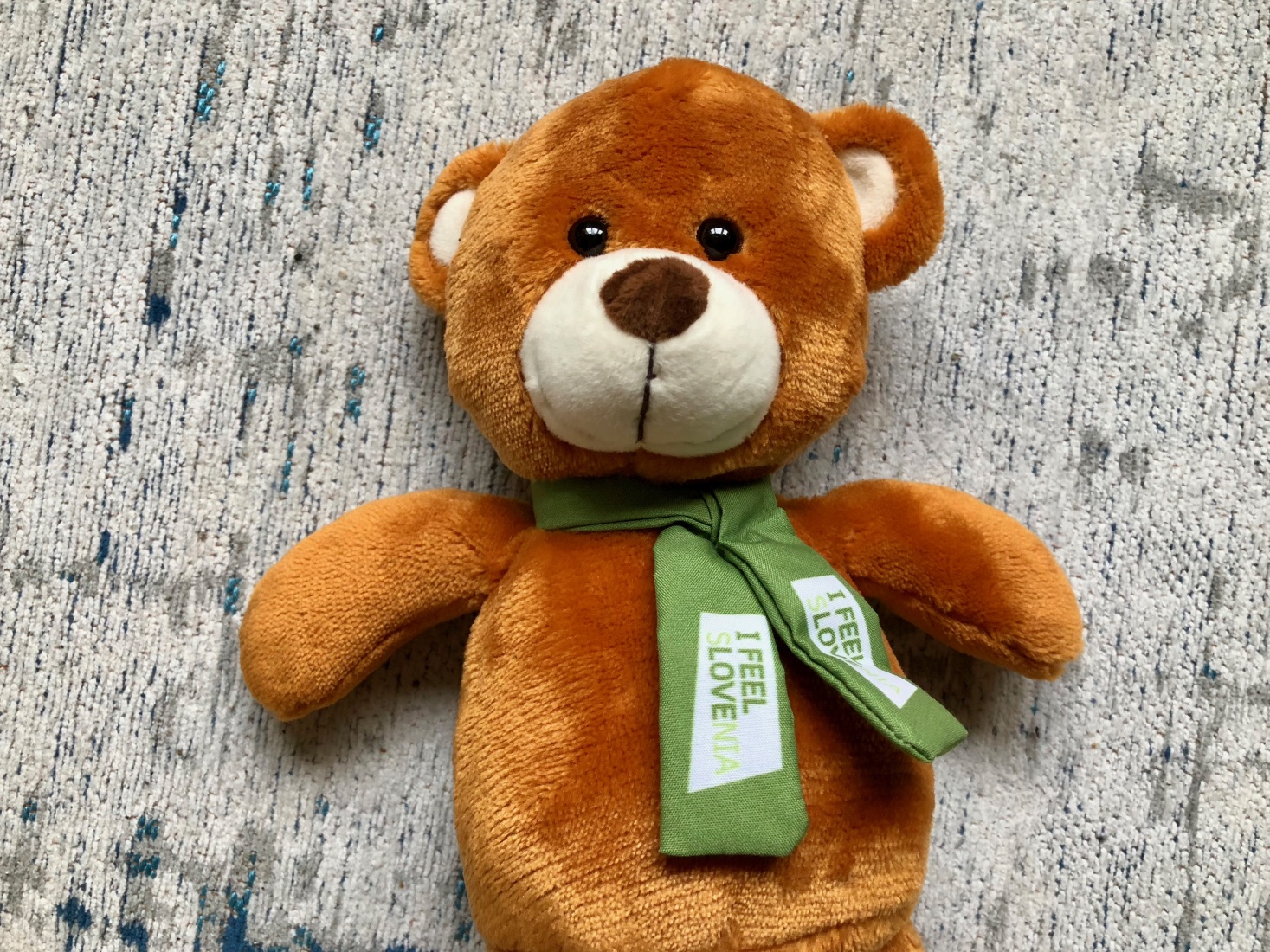
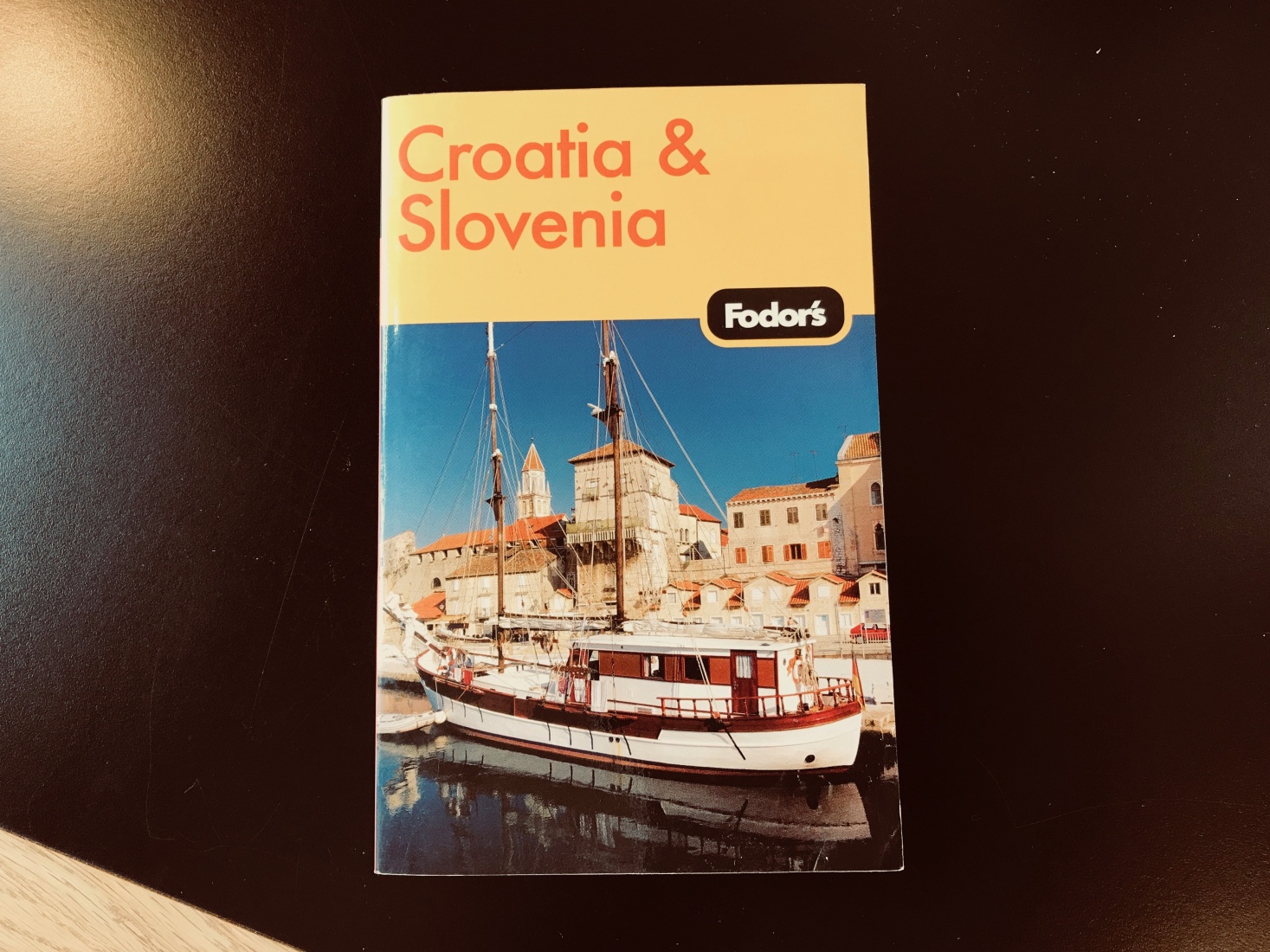
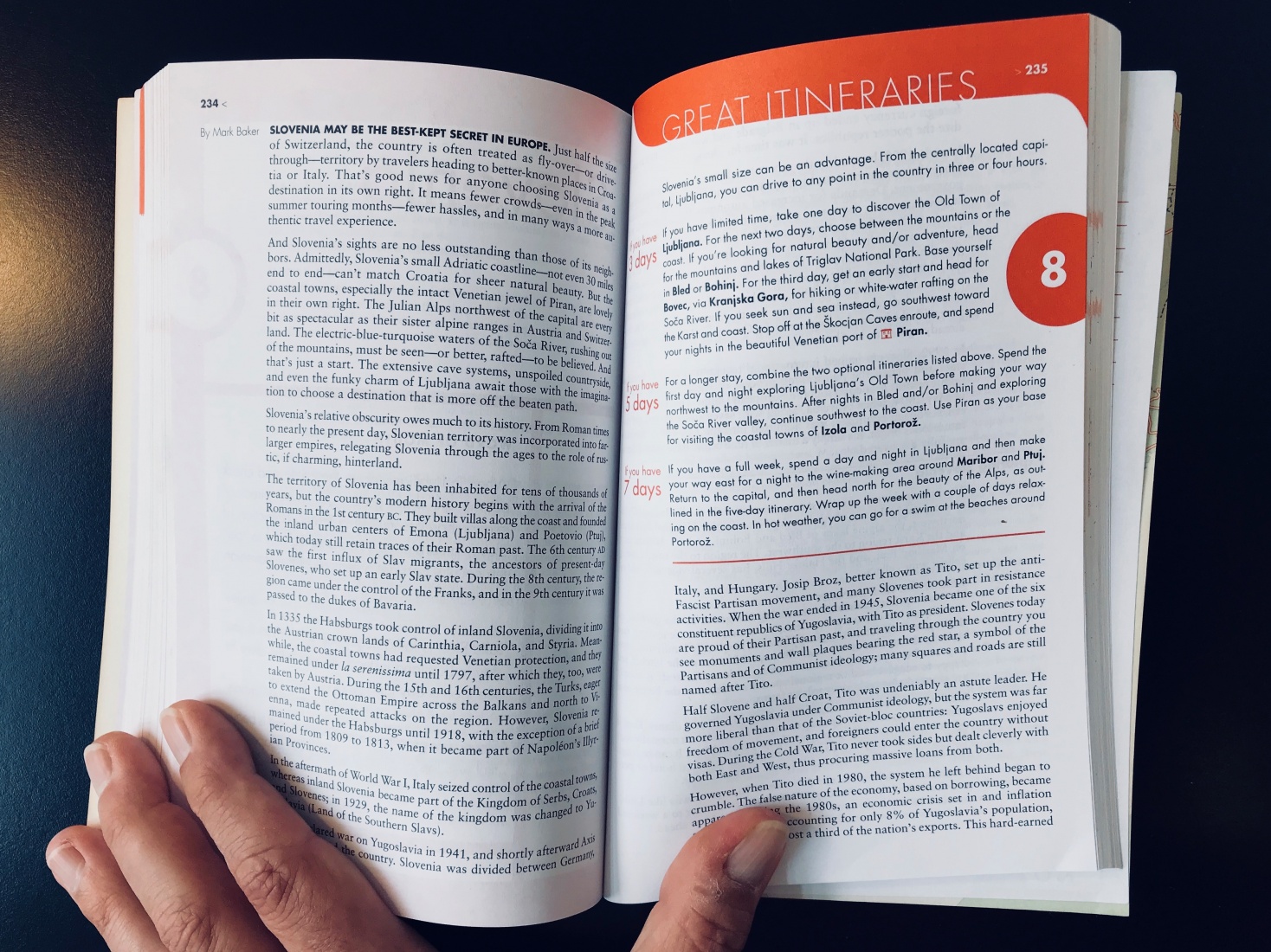
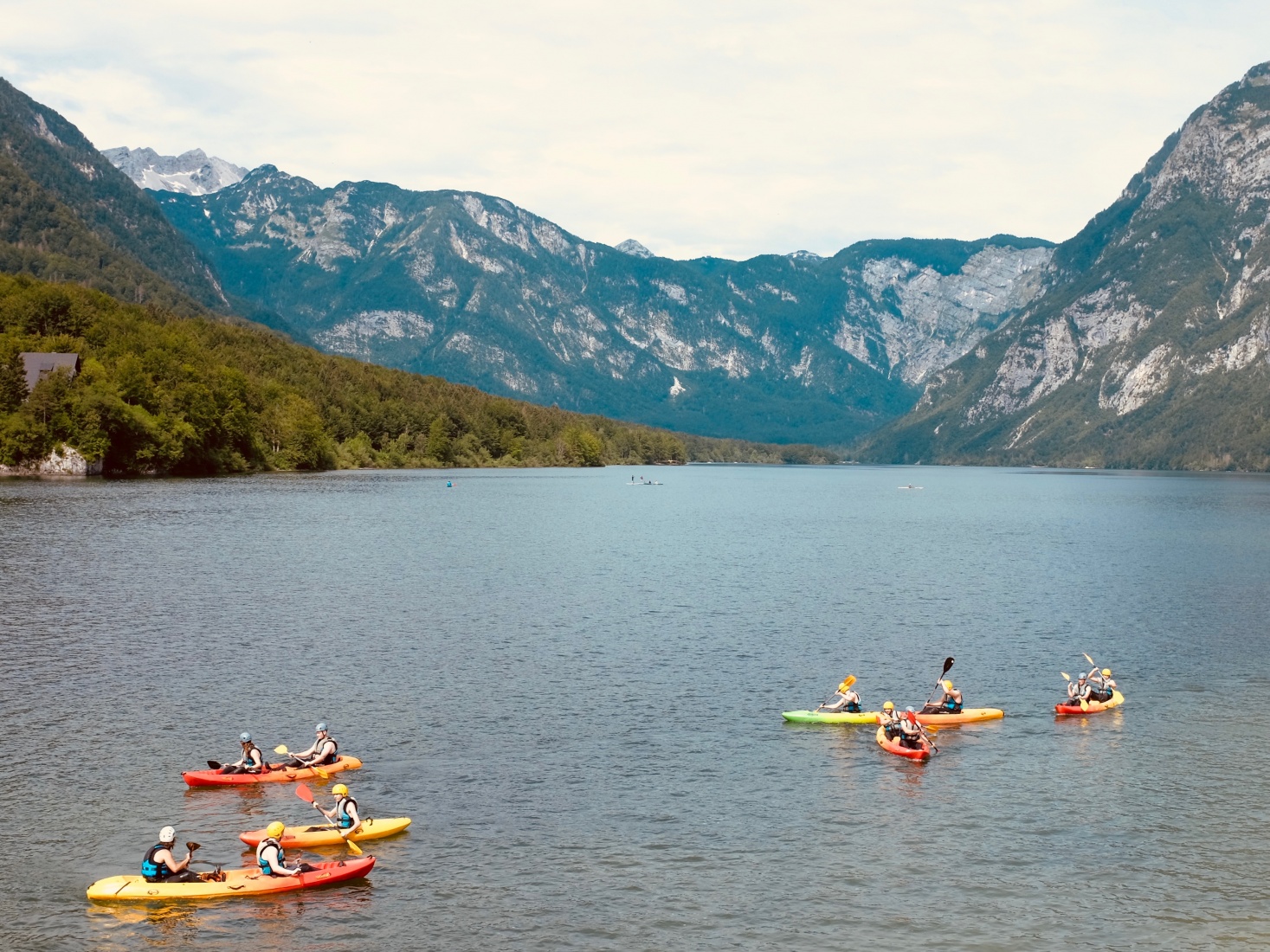
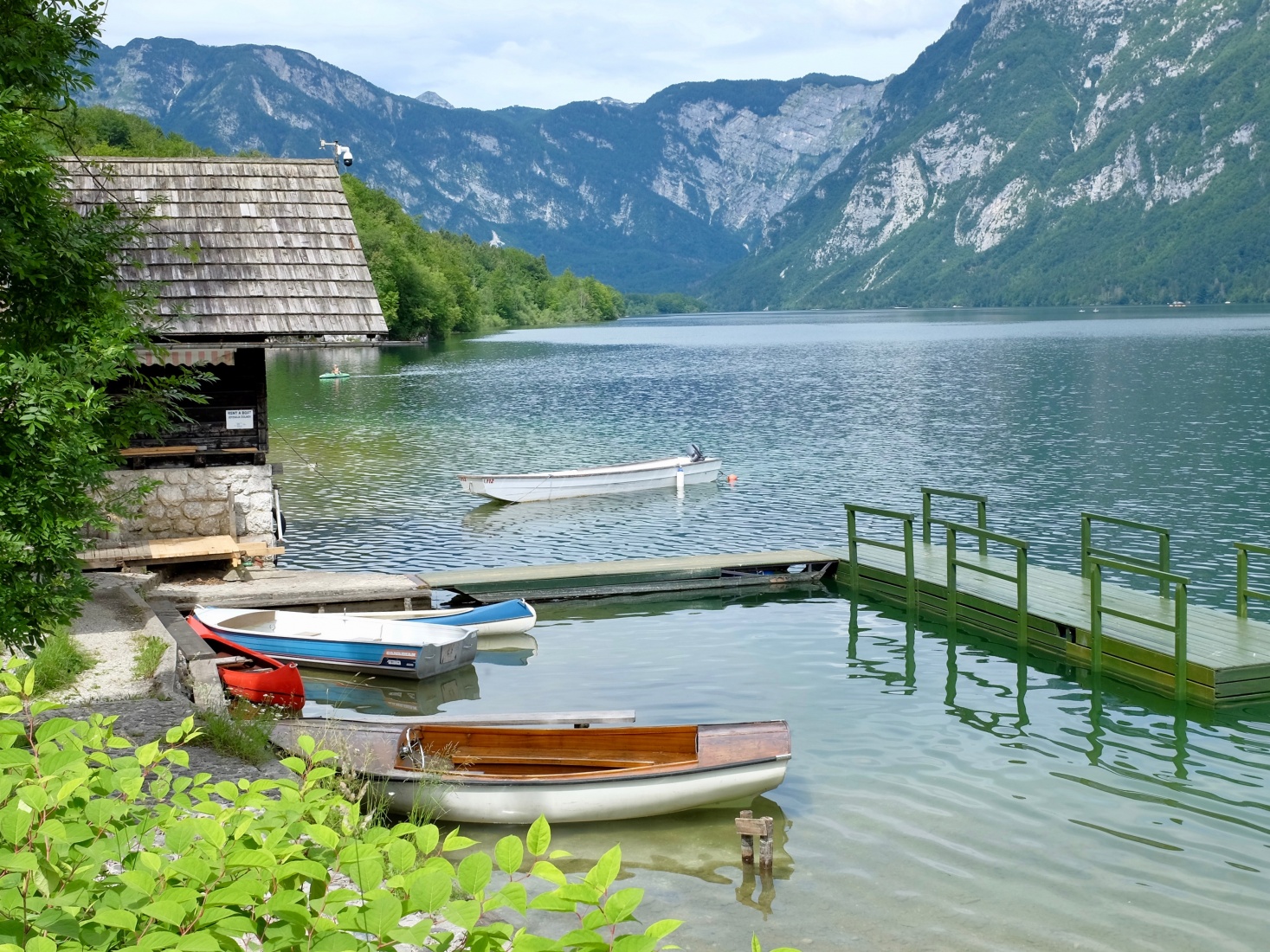
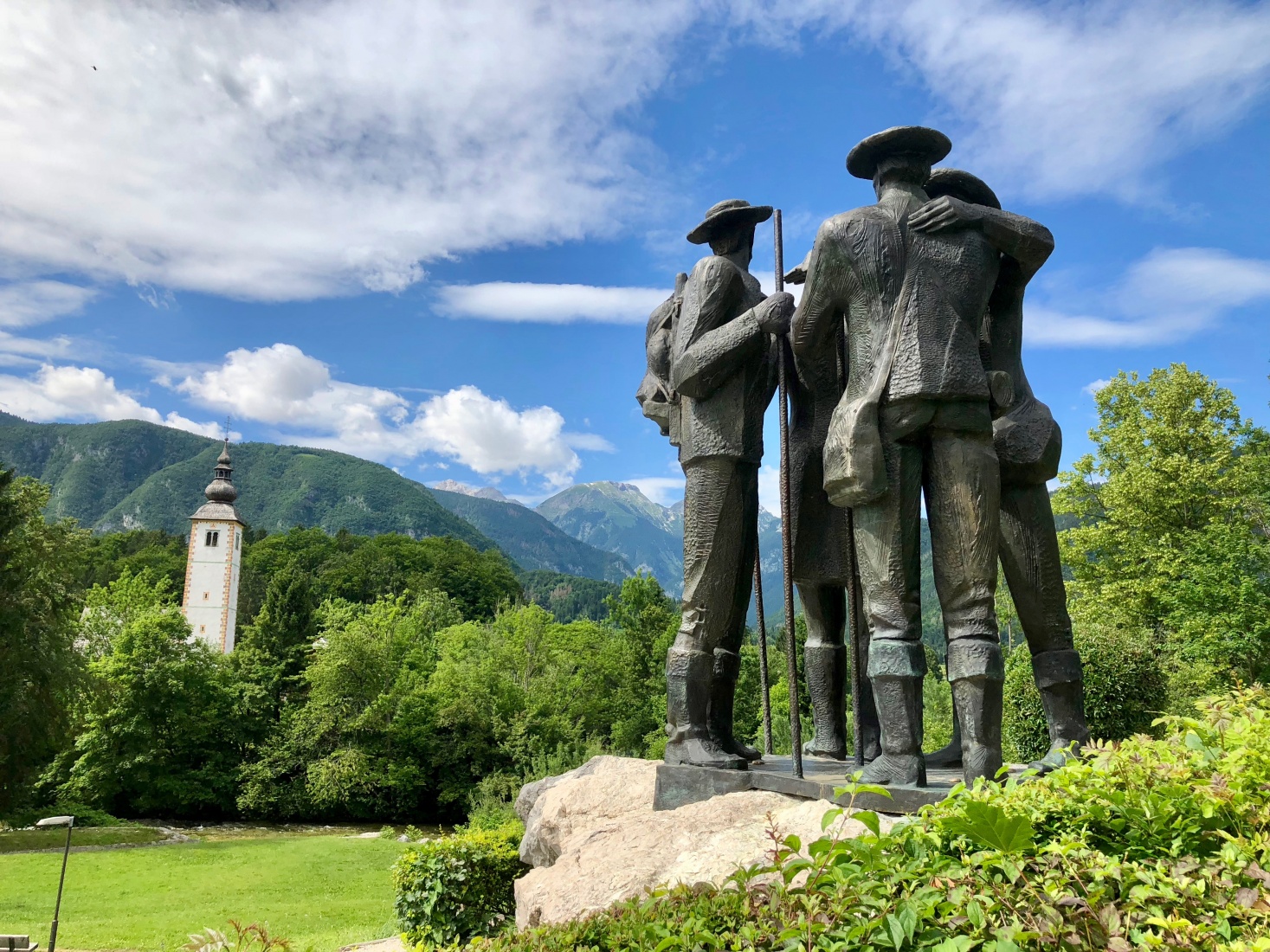
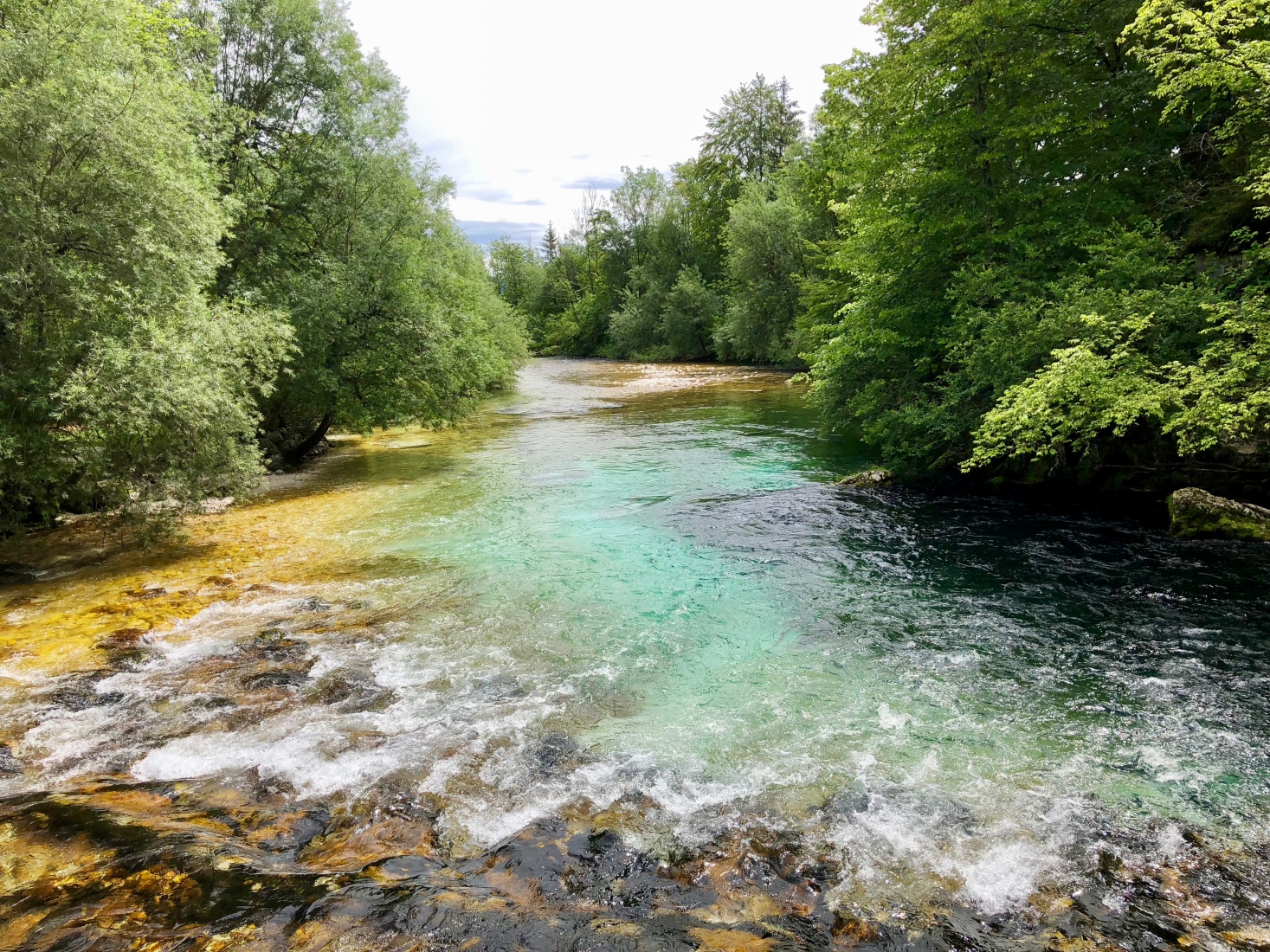
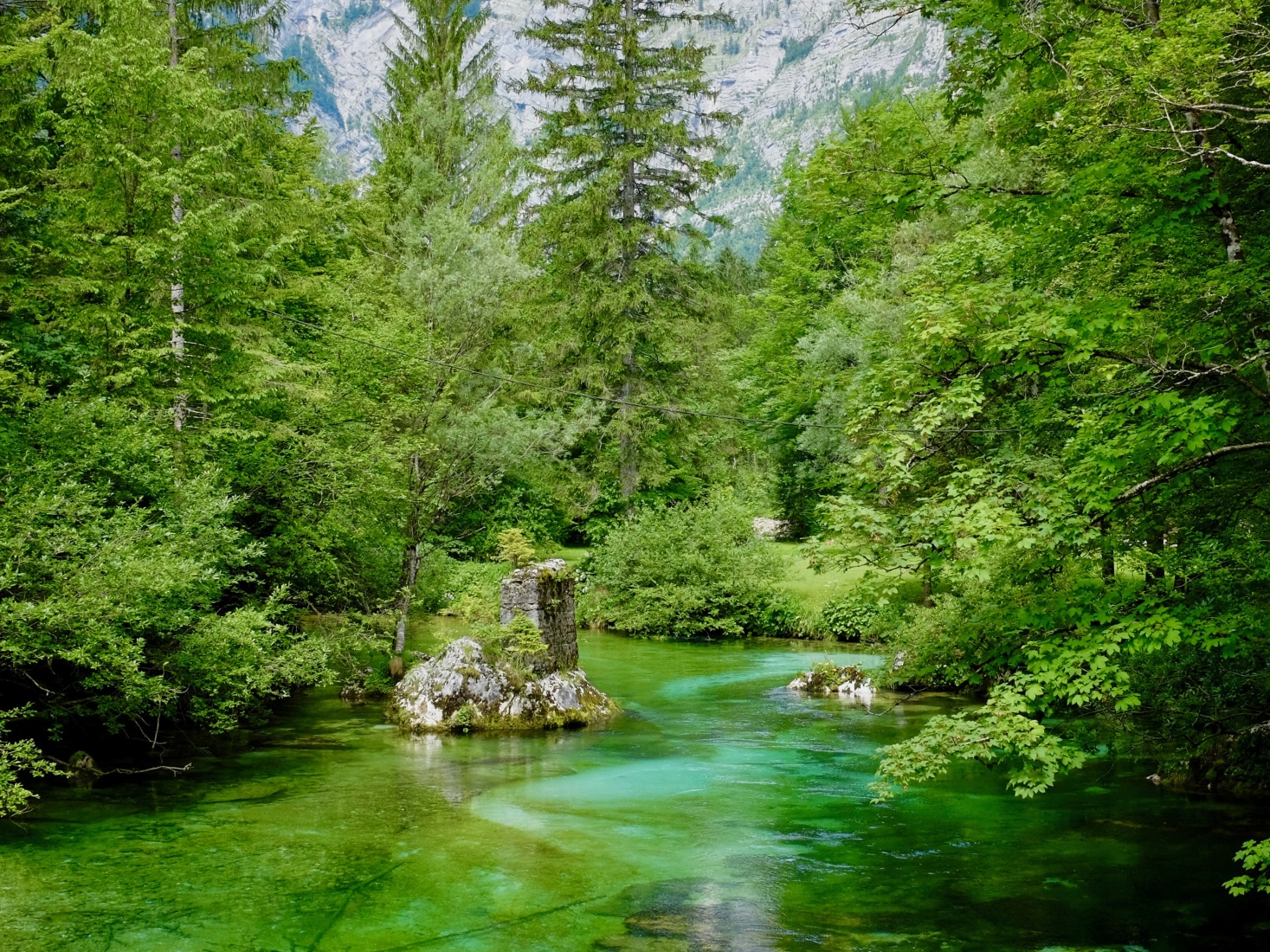
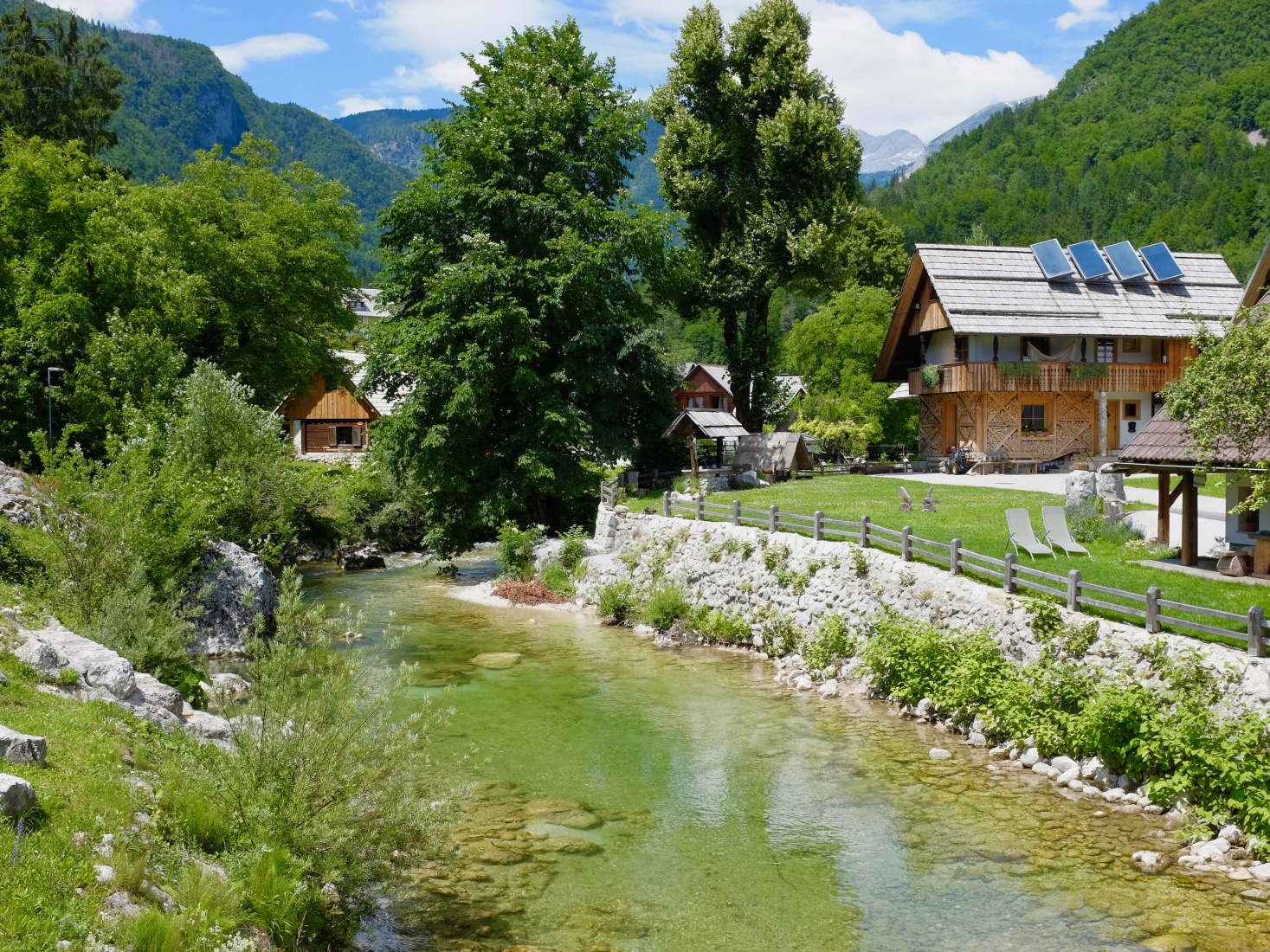
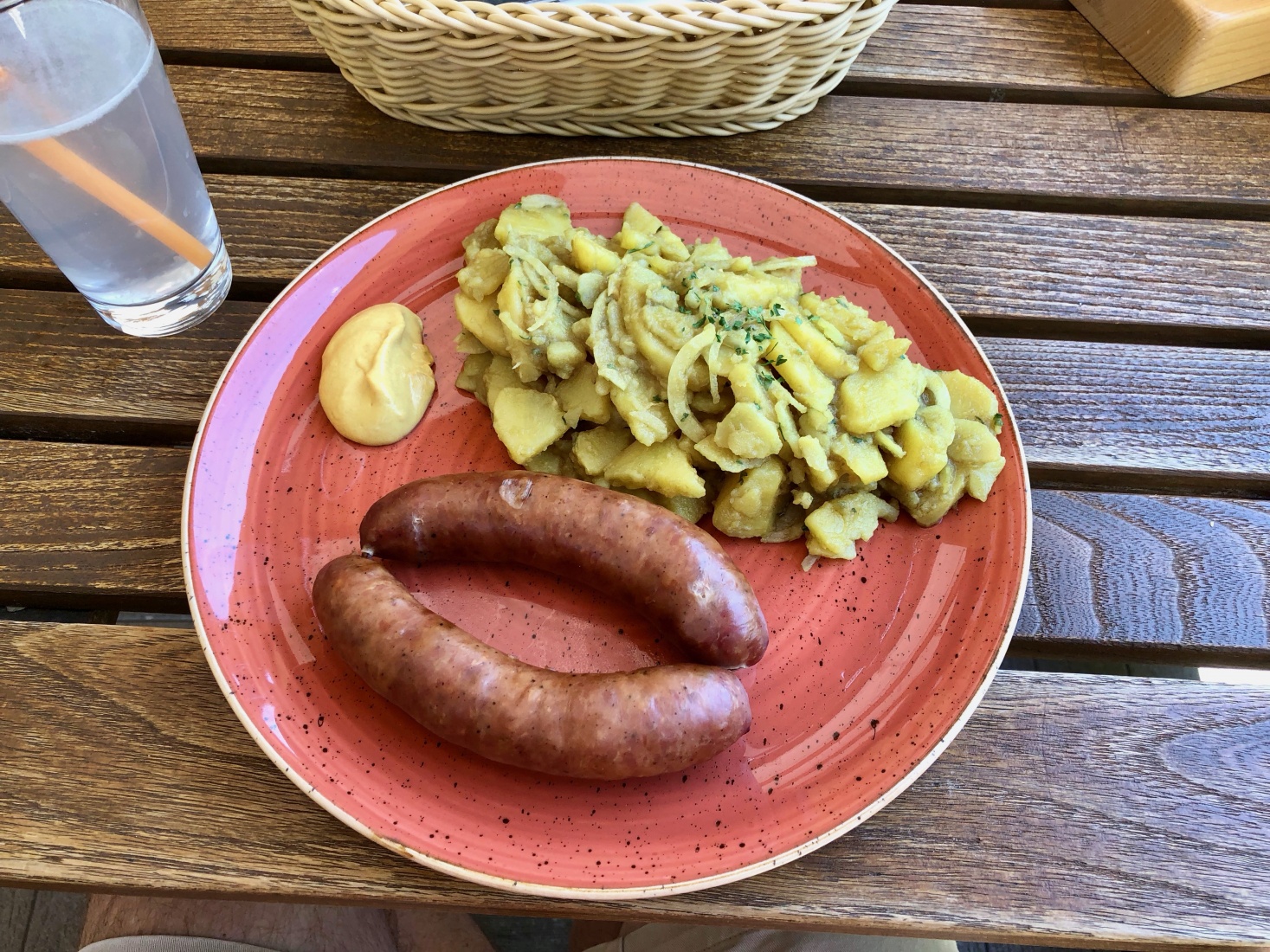
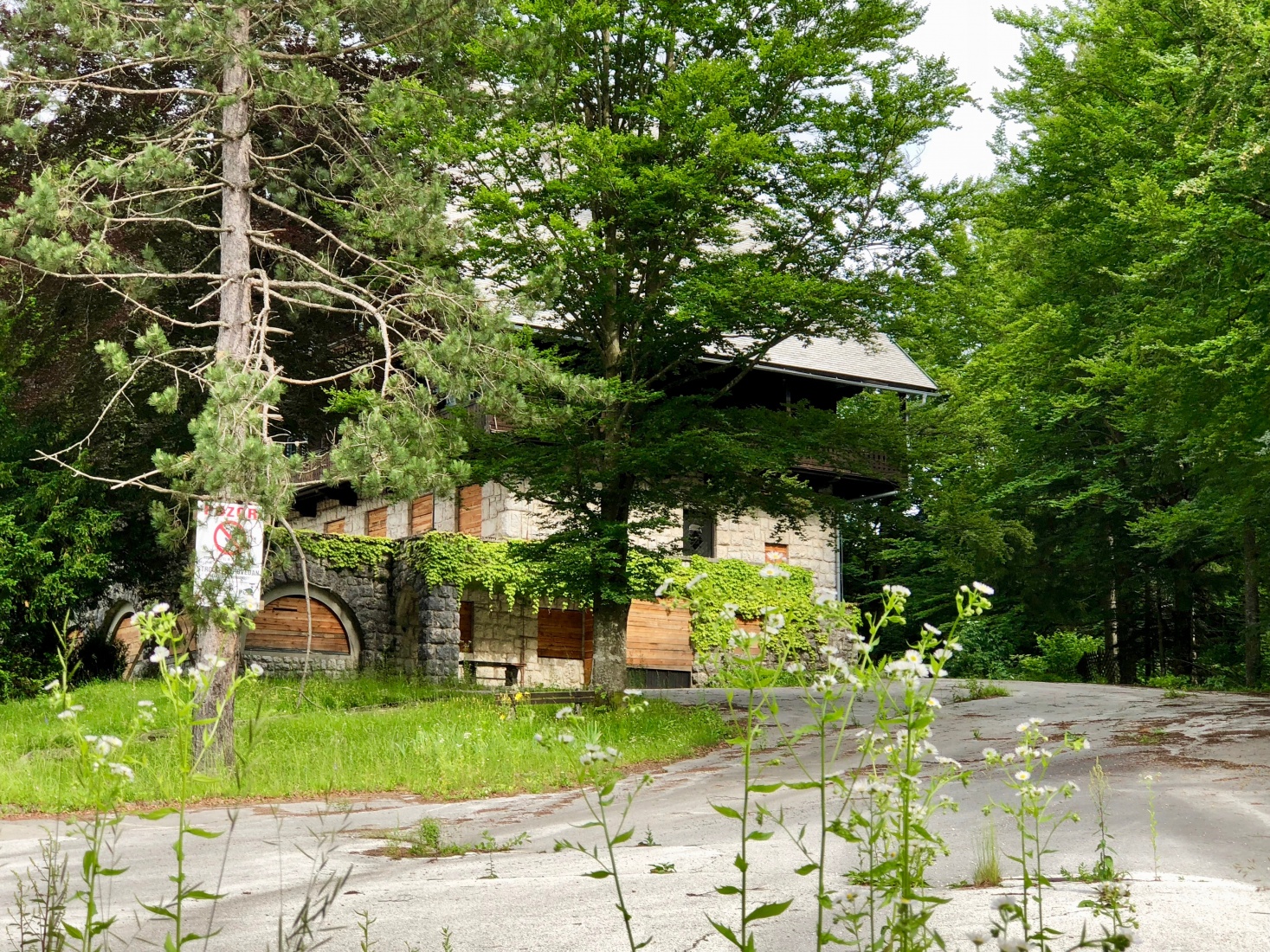
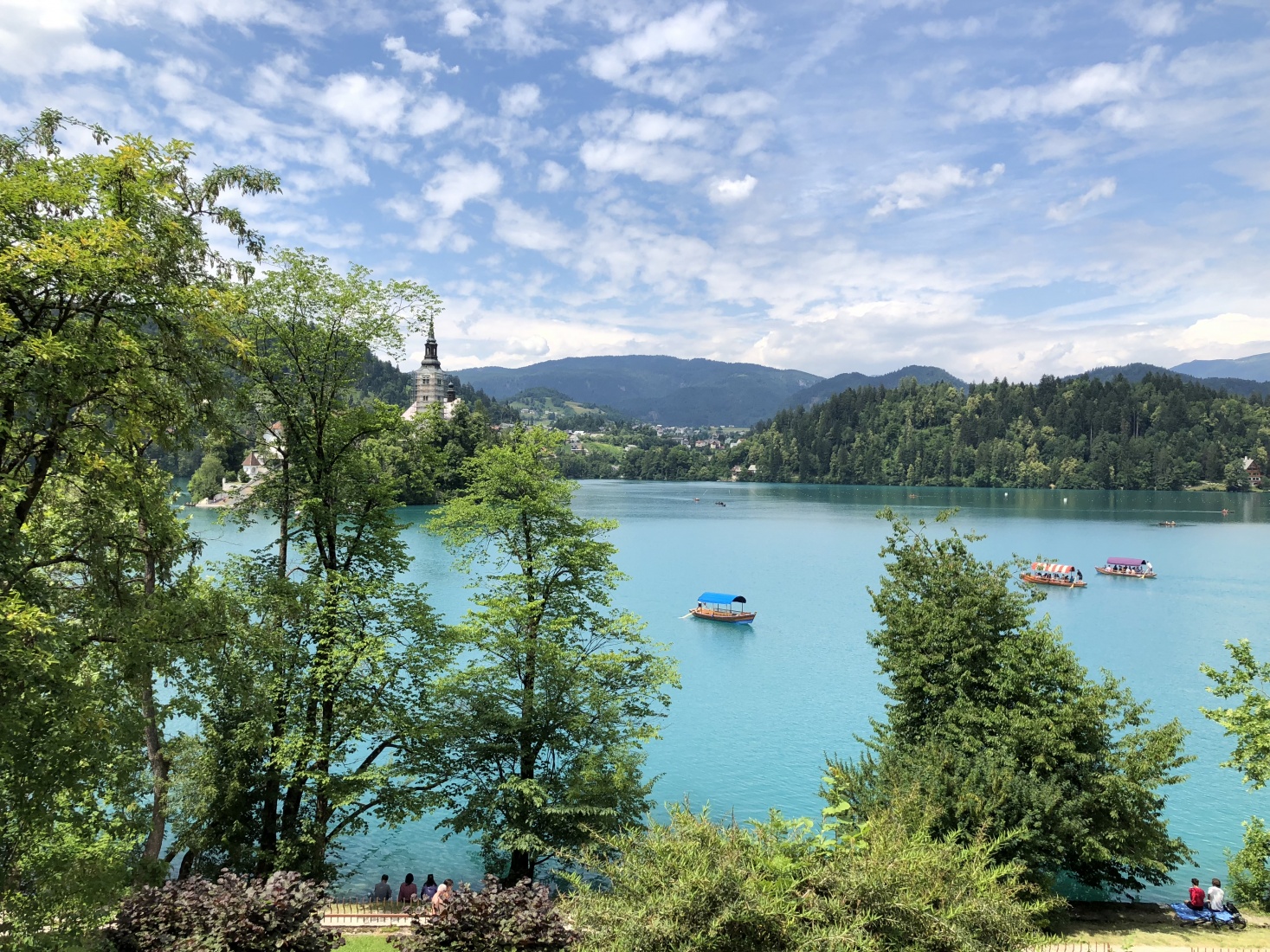
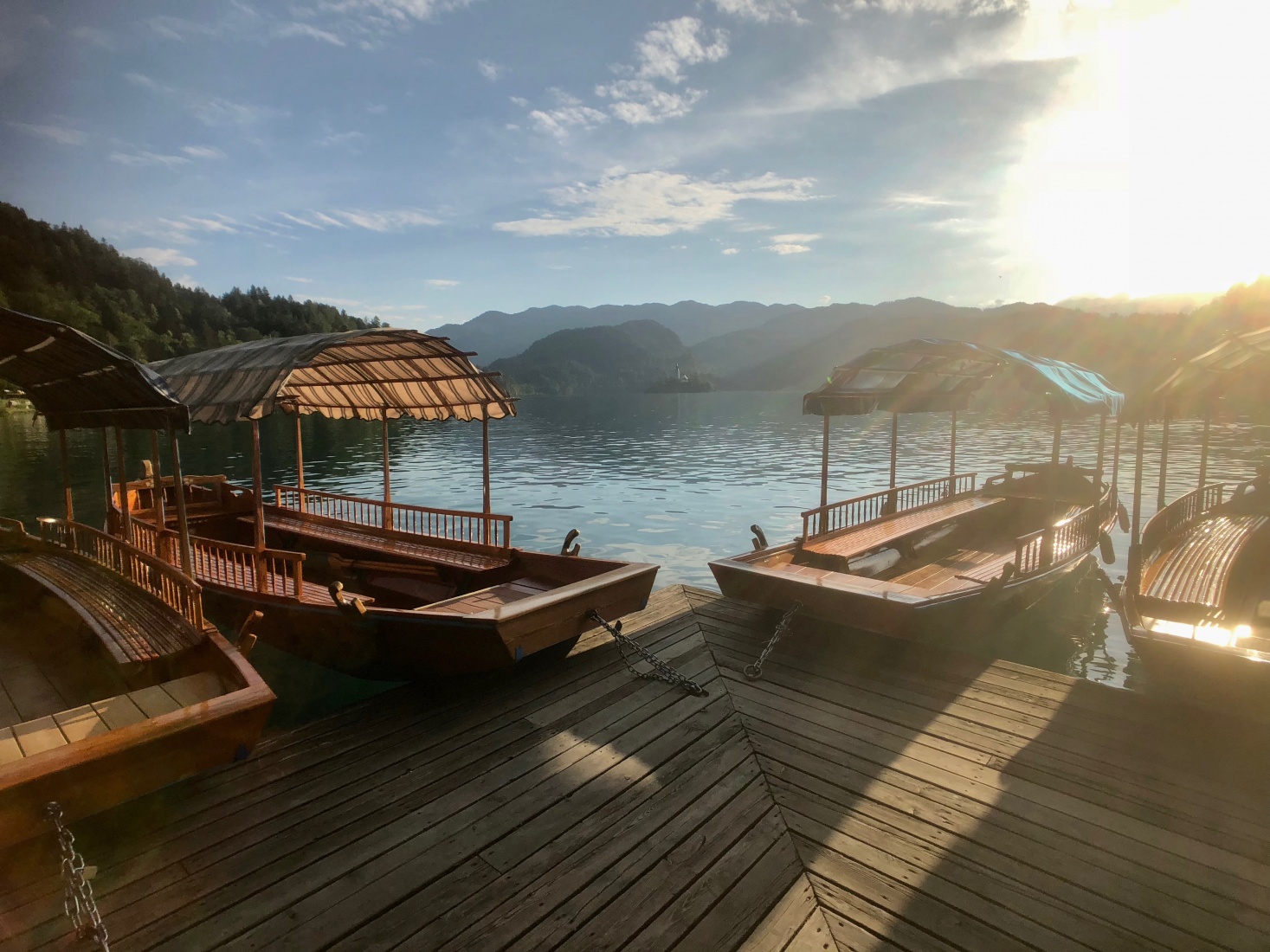
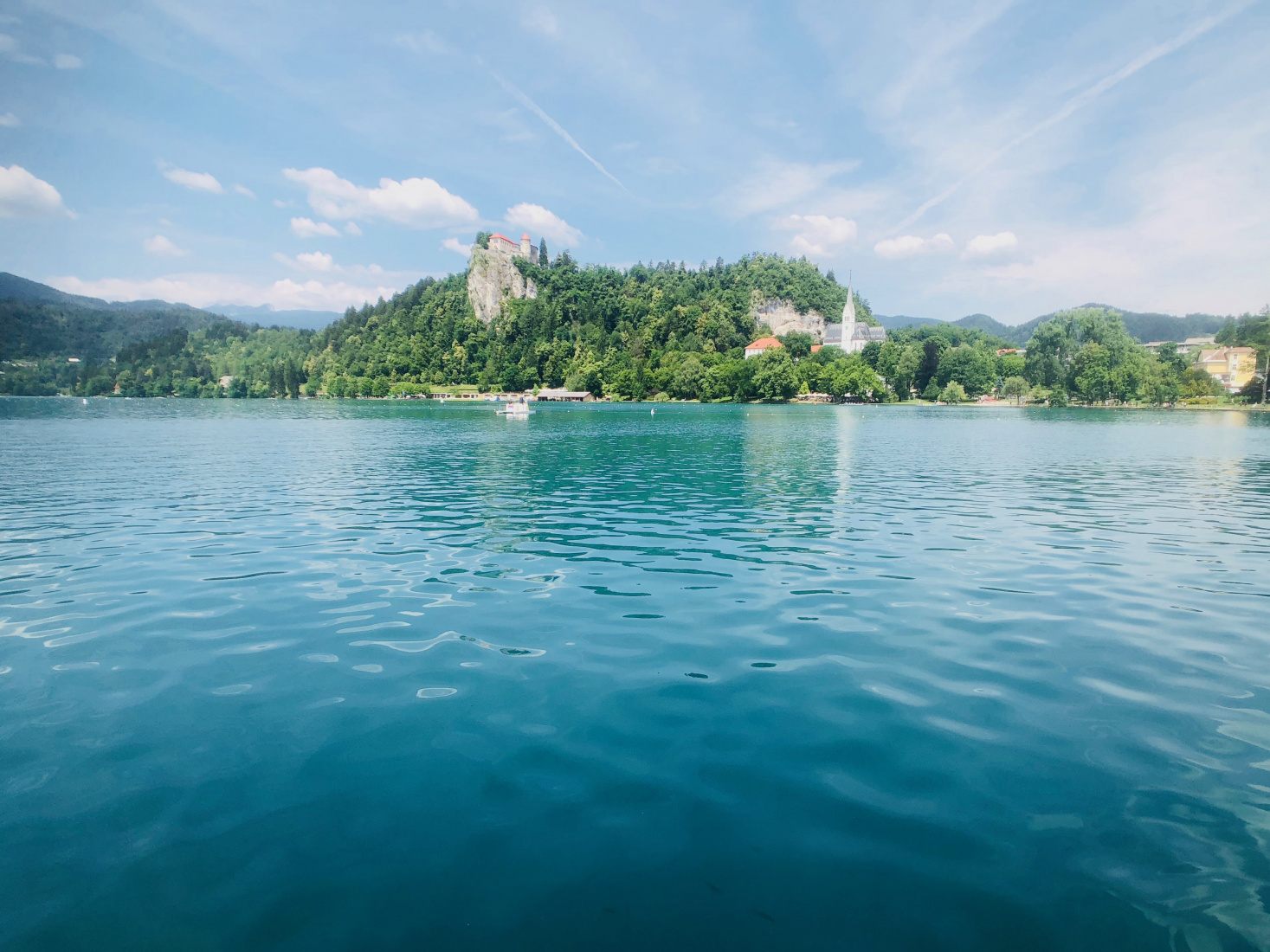
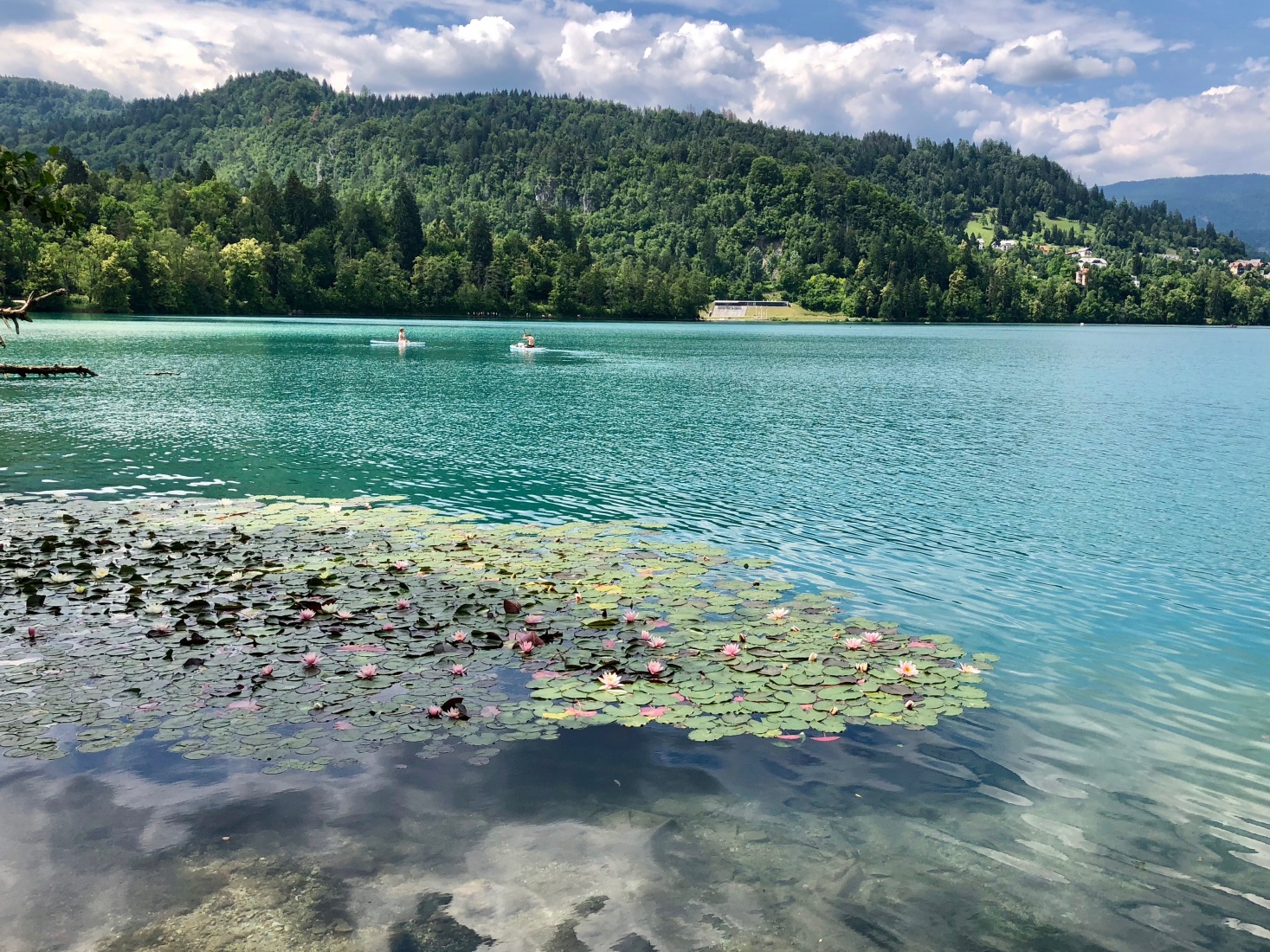
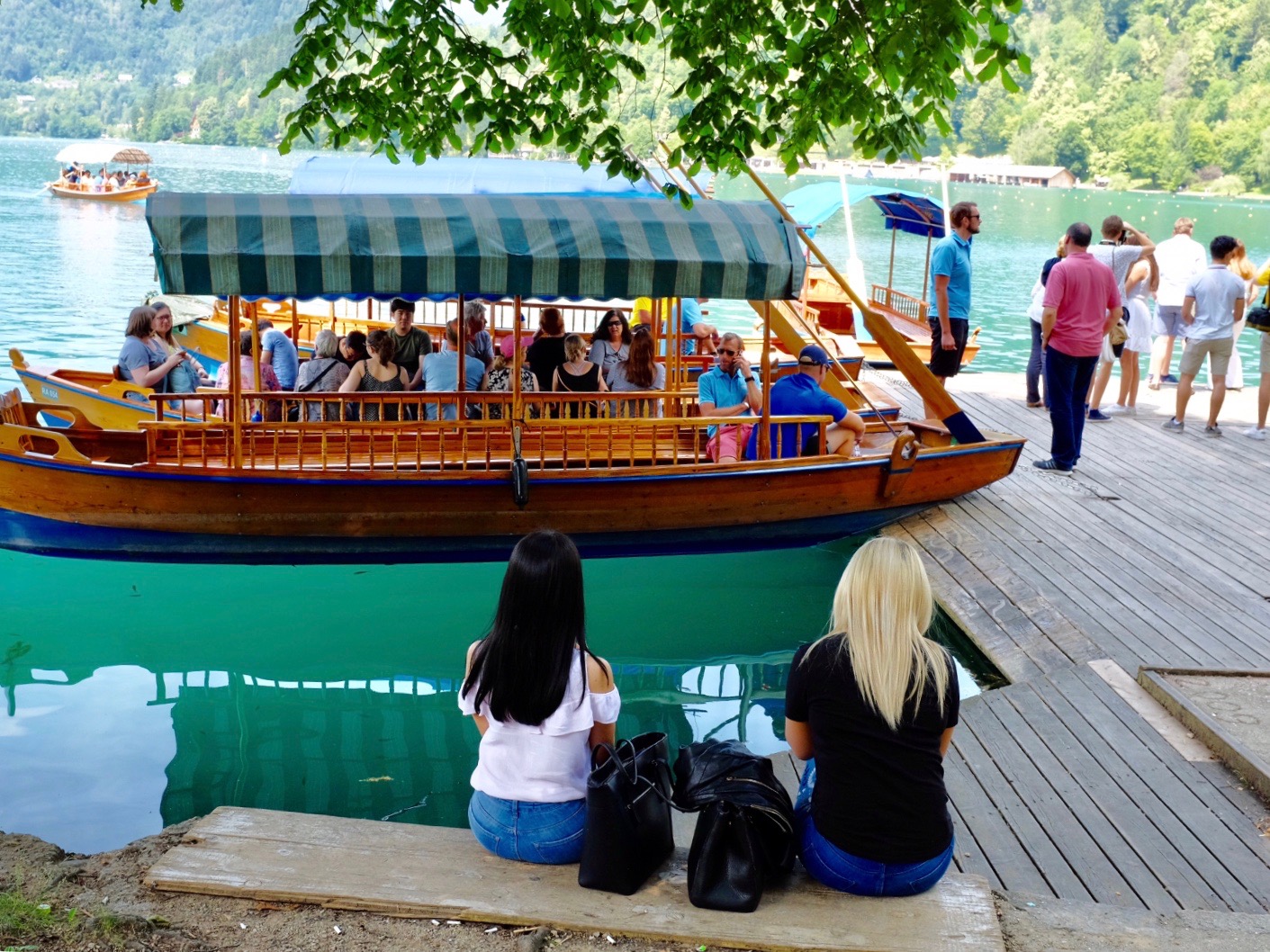

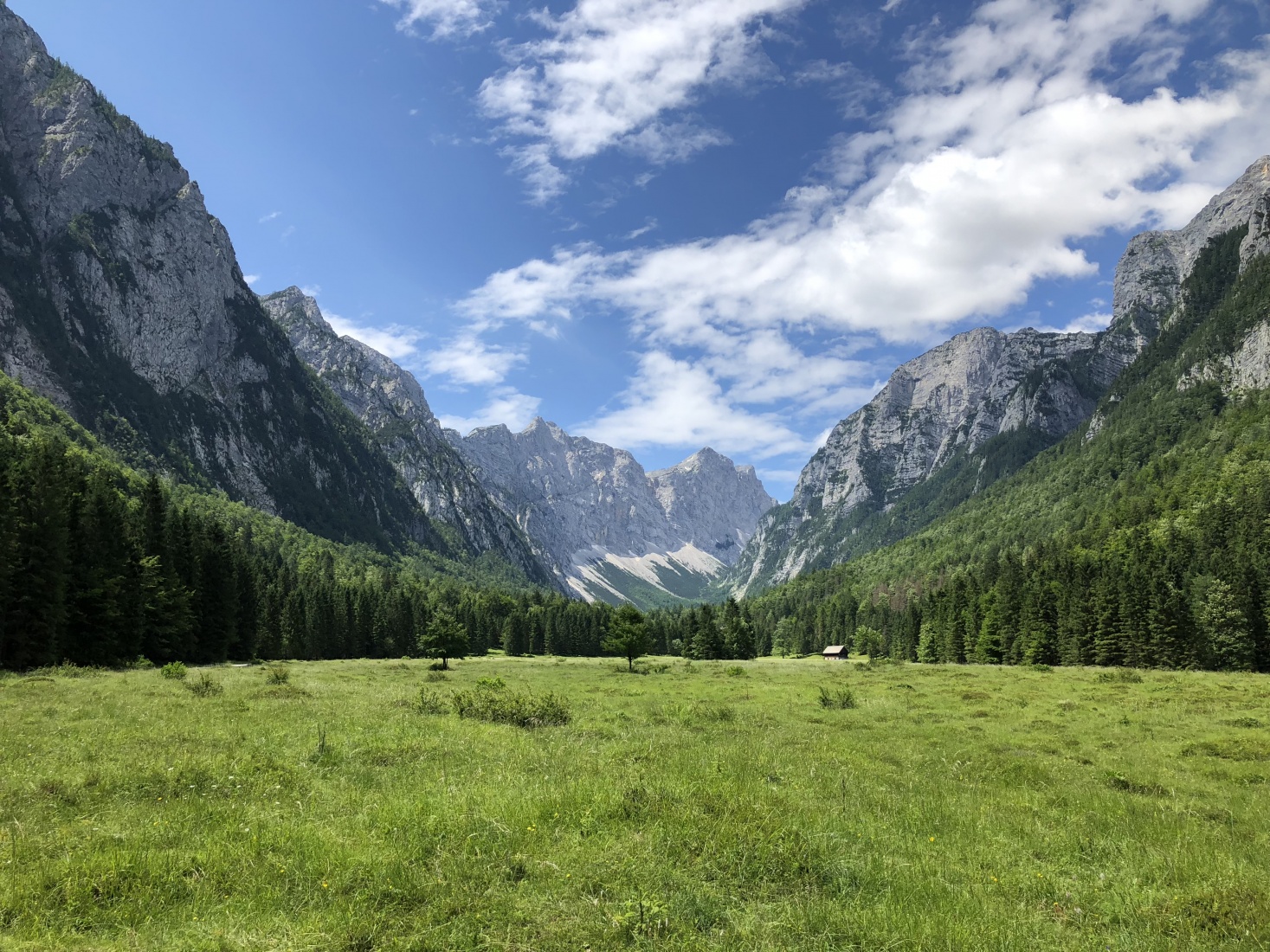
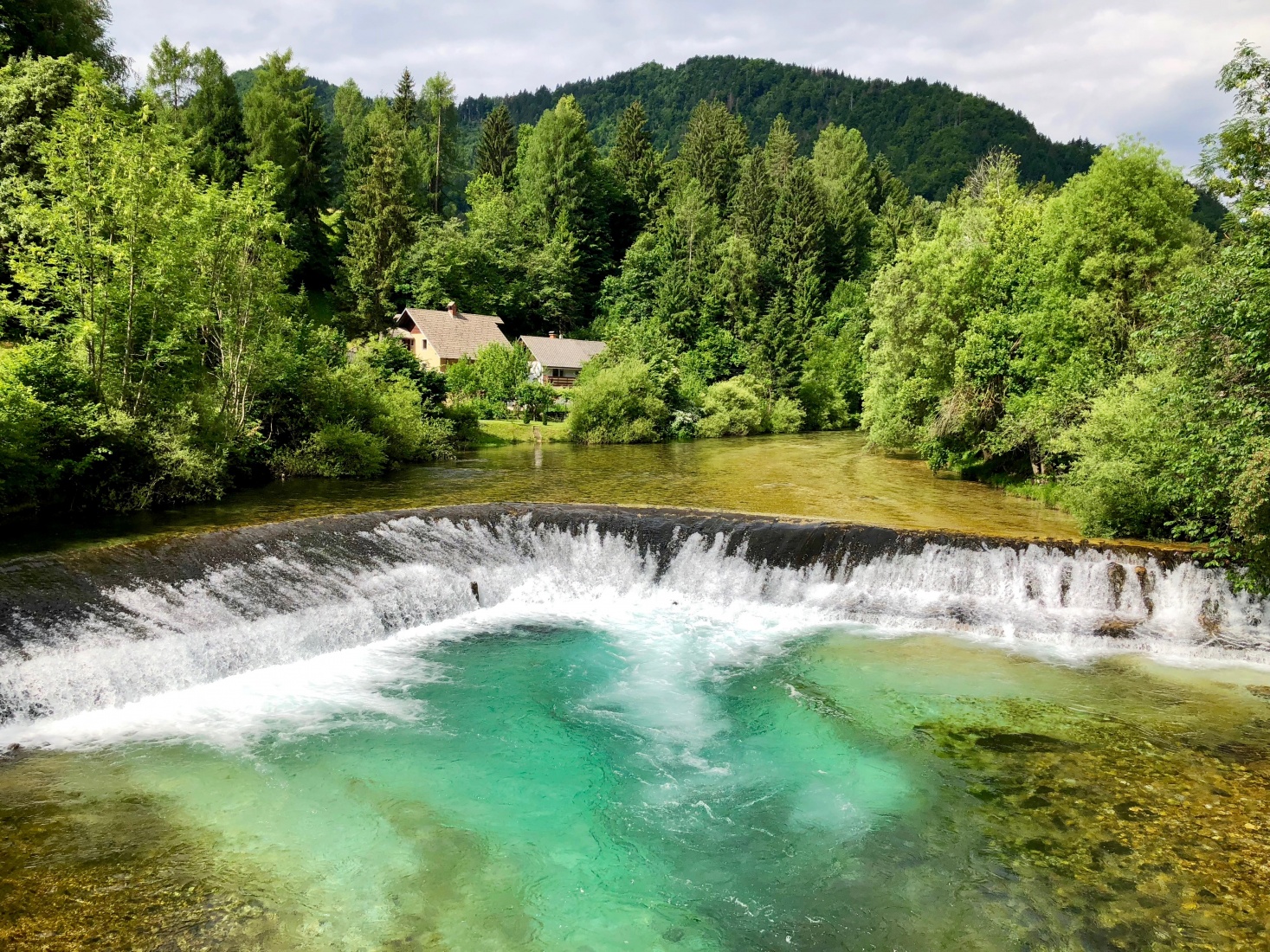
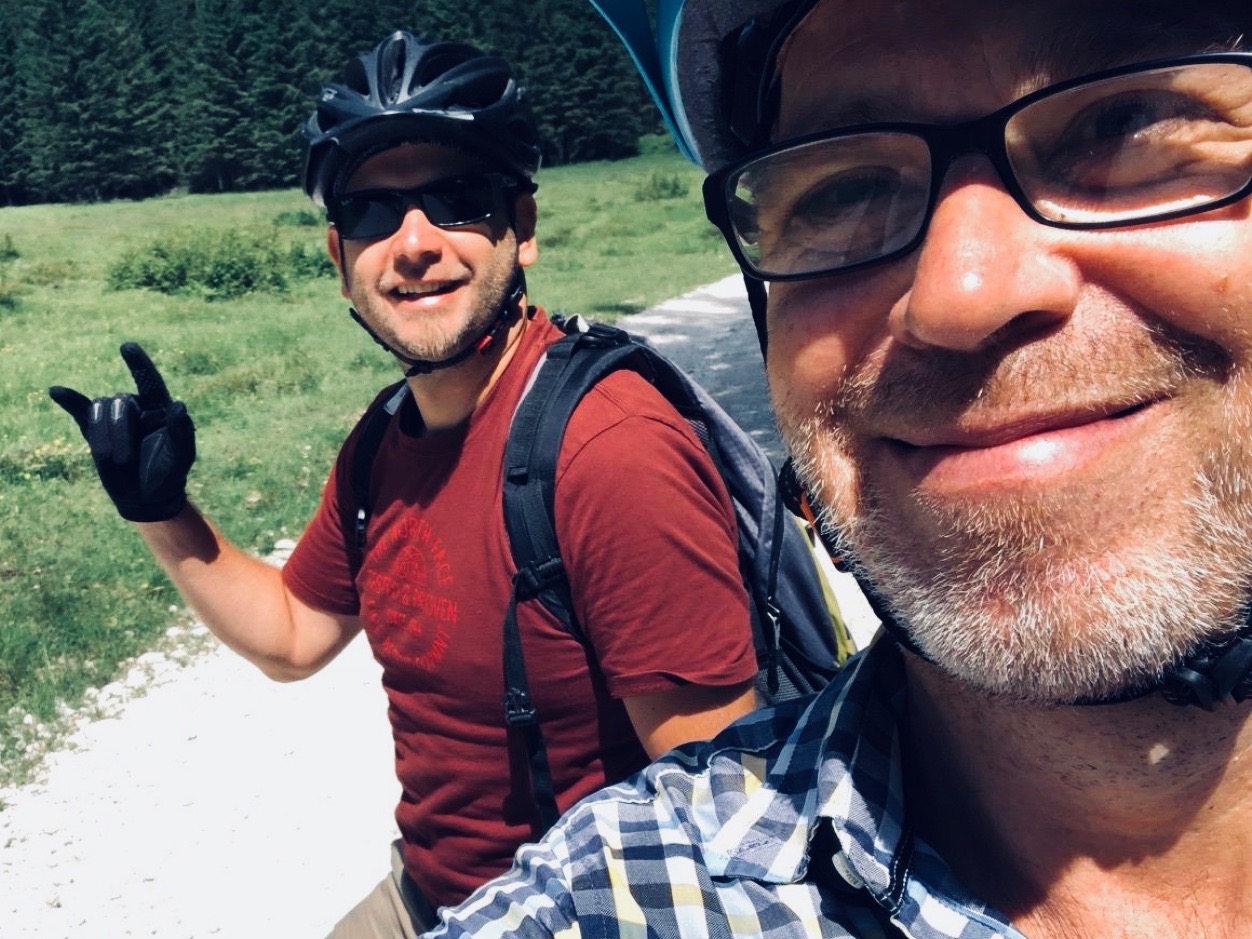
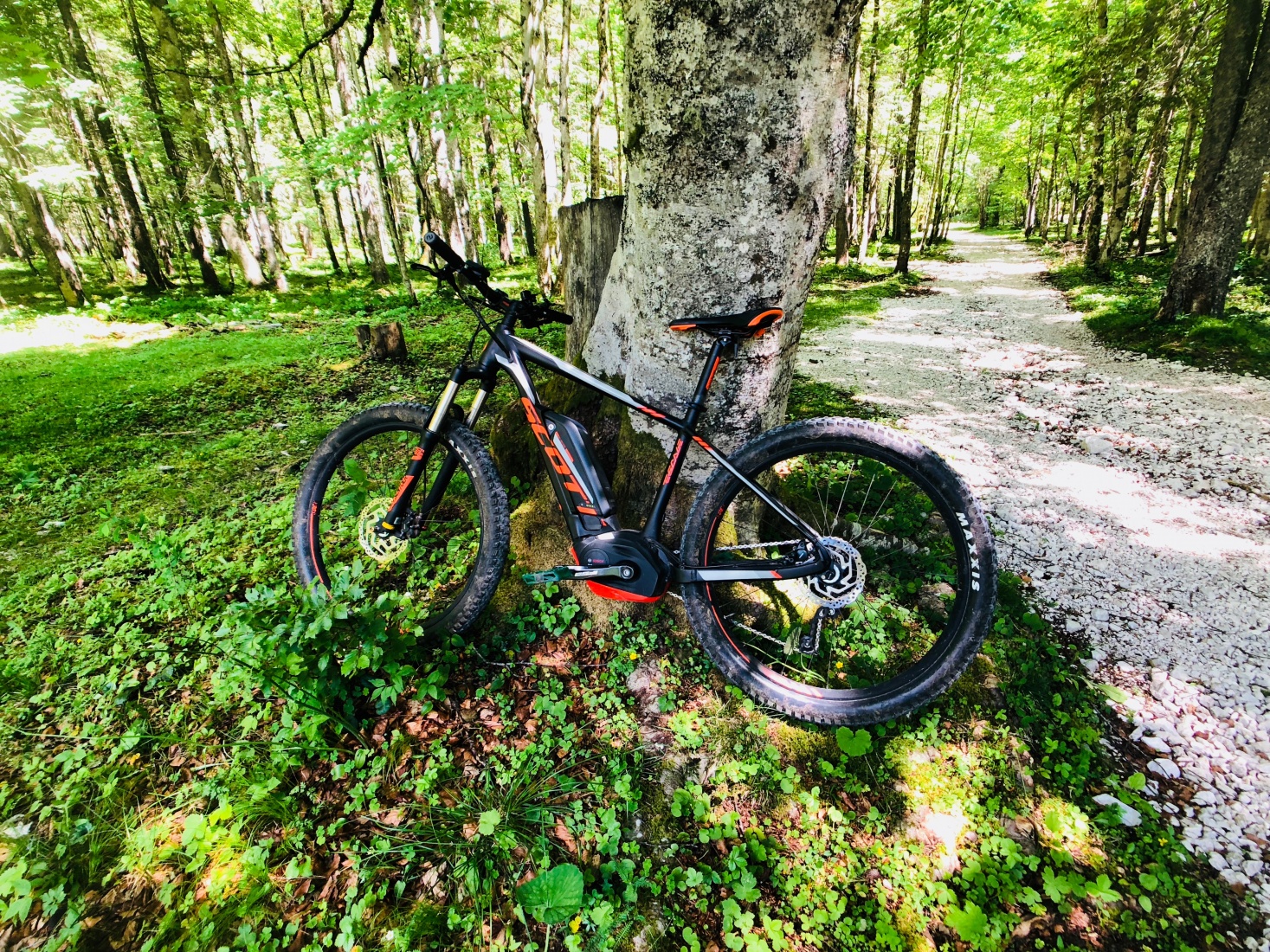
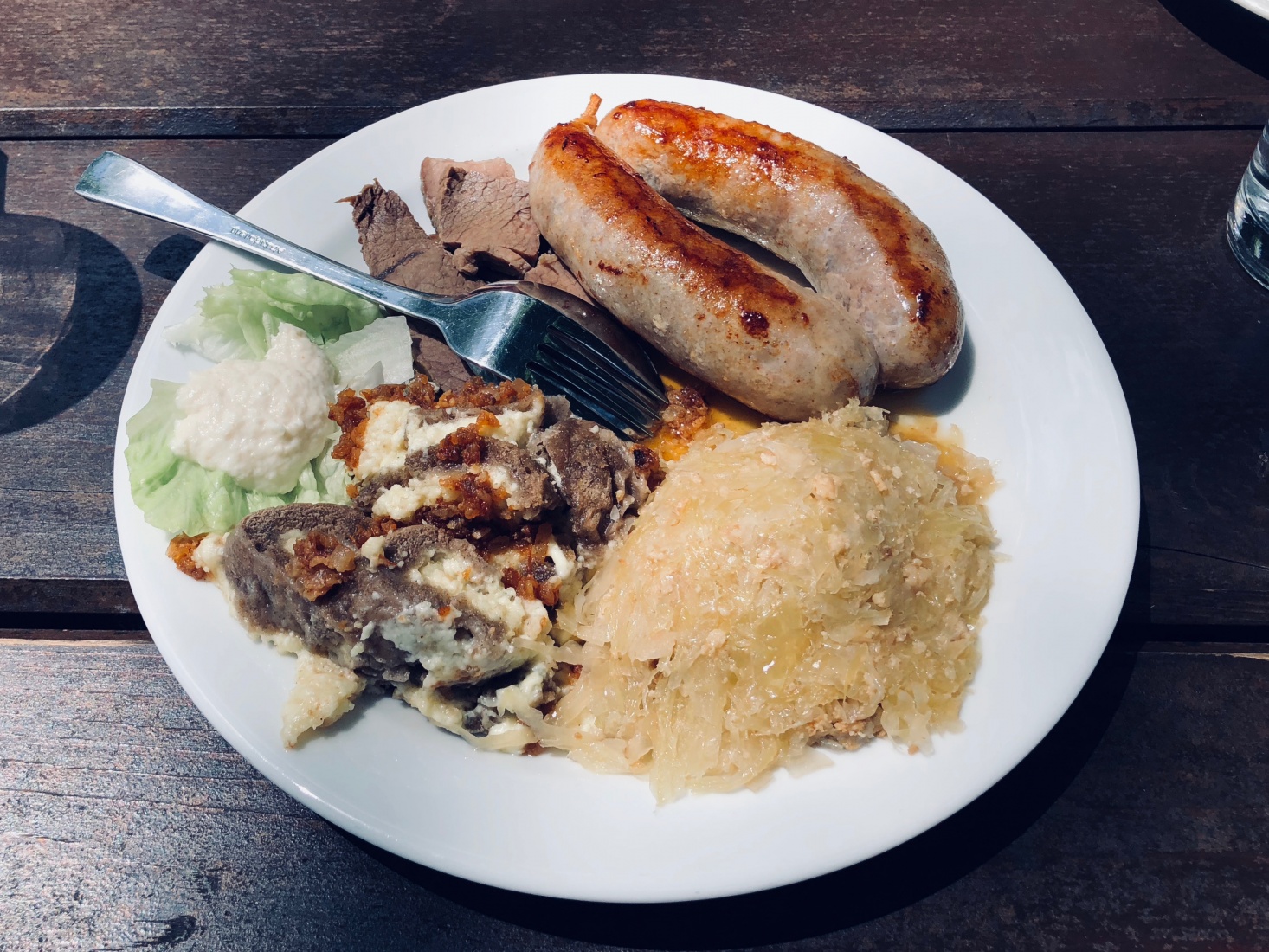
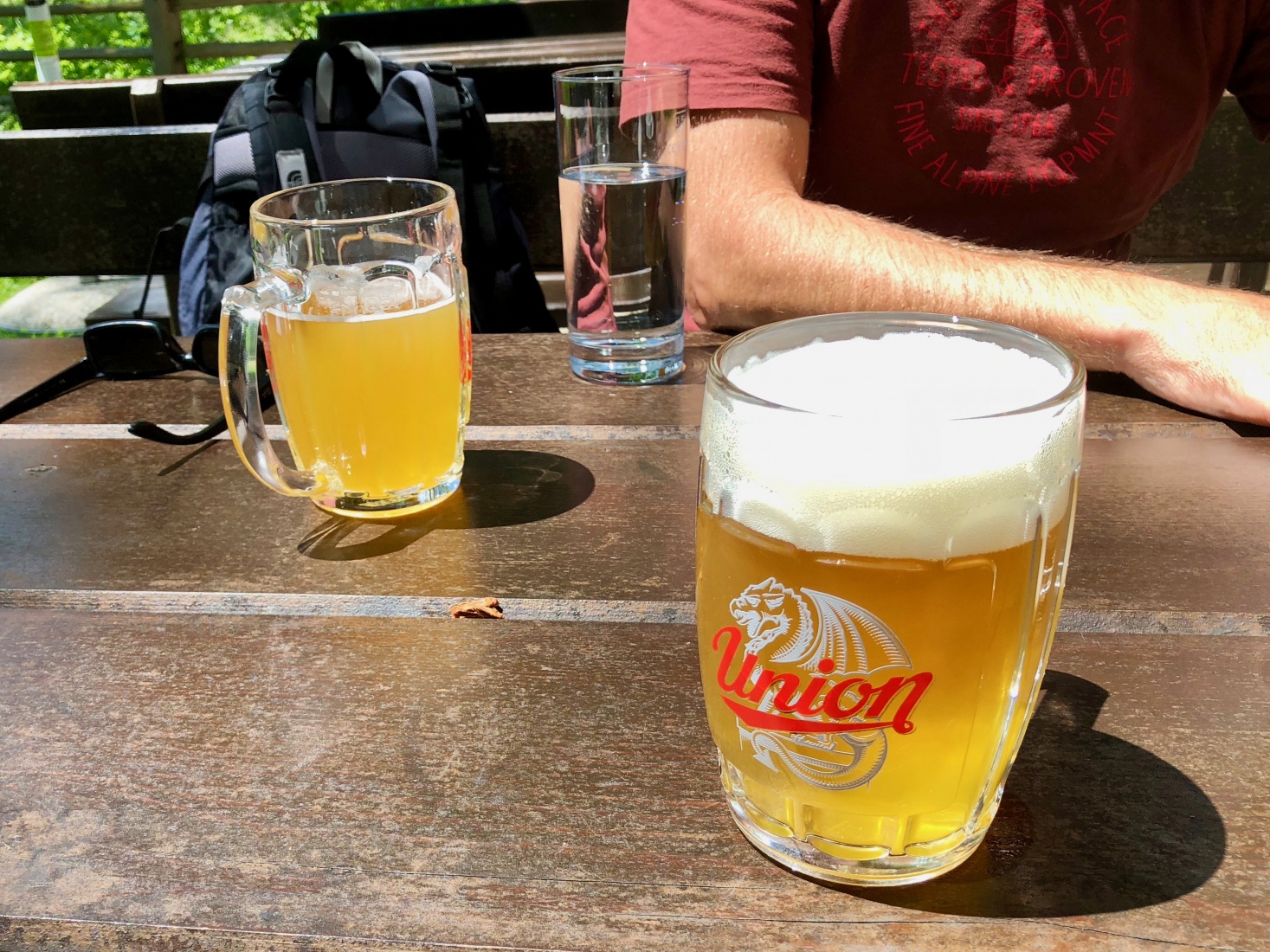

Hi.
I have only just chanced across your website and Bohinj/Bled article while researching the Hotel Bellevue.
I stayed at the hotel in 2004 when it was already starting to struggle. As with the Zlatorog, Bohinj(former Kompas) and Ski Hotel Vogel the Bellevue’s demise has been keenly felt in the region, in effect slashing the number of overnight stays which have given away to more environmentally damaging and less-lucrative day visits by those with Instagram ‘must see’ lists.
Having visited Bohinj on half a dozen occasions I have extensively written about its accommodational problems and those arising from frankly too much tourism. Bled and Bohinj are two very different places and although the latter will not become as commercialised as its cousin, how it approaches limiting otherwise unchecked tourism through ‘soft tourism’ initiatives and perhaps a levy on visitors entering the Triglav National Park is vital in the long-term as well as the here and now, with an anticipated stampede of tourists and locals likely once lockdown measures are loosened.
When the Bellevue was bought by its current owner(who also purchased the nearby Pod Voglom Hostel) it seems a competition was launched, aimed at architectural and creative circles, to find a suitable design for the Bellevue 2.0. If you search ‘Hotel Bellevue Bohinj’ and look at Google images, many of the designs can be seen. It has to be said that most are absolutely appalling. I have emailed the local tourist association to ascertain where the Bellevue is up to in terms of finalising a design for the new build and renovation.
If Covid-19 allows I will be visiting the area in the autumn for a writing and research trip, when I hope to find out more of what the new owners have in store for the various derelict and underperforming hotels now in their respective possessions.
Best wishes
Charles.